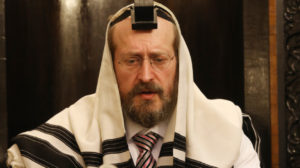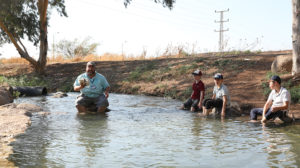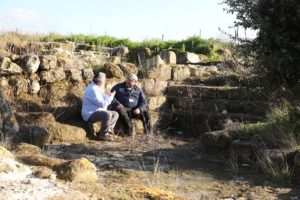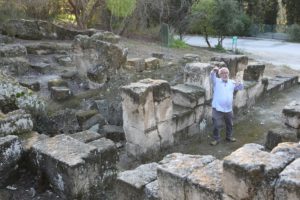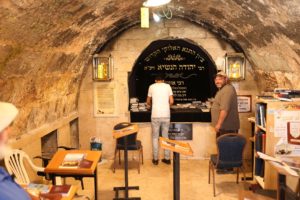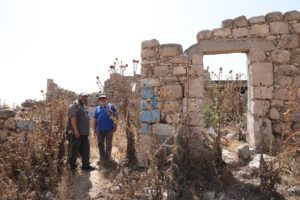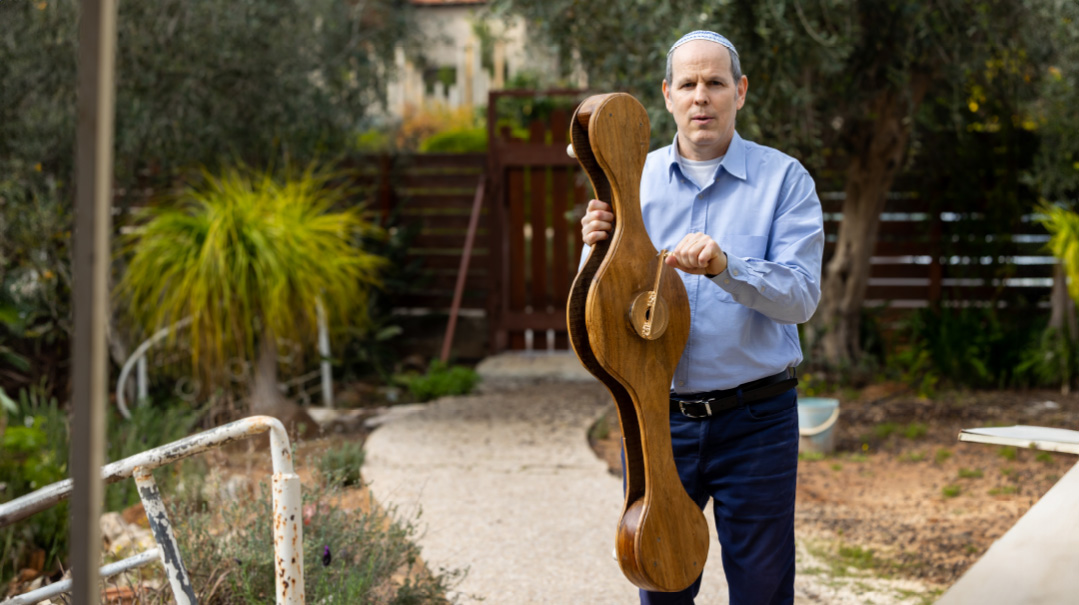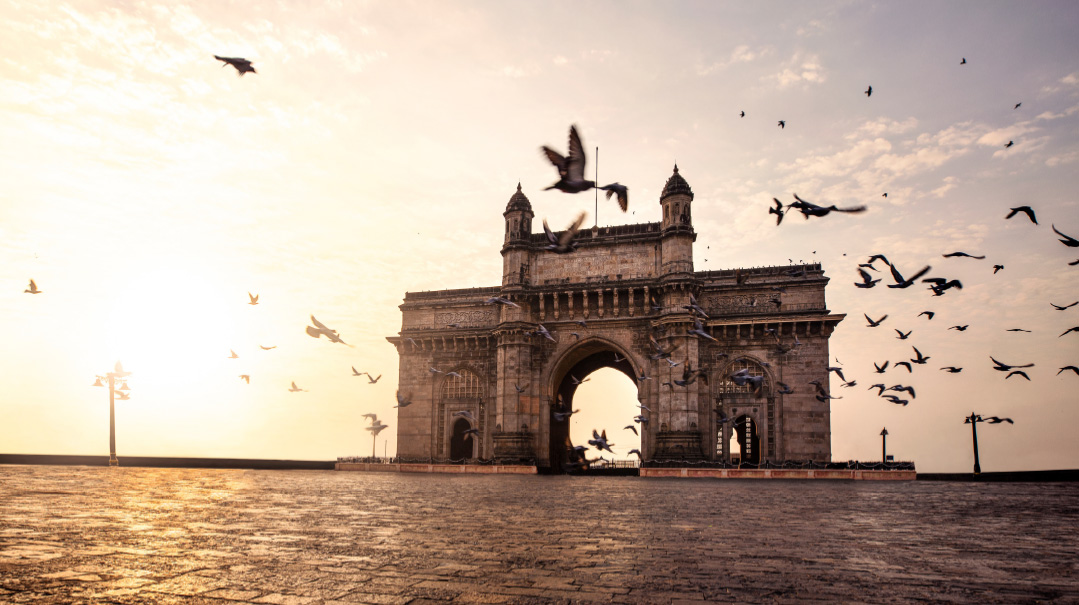Swiss Accounts
| November 6, 2019Ten generations ago, in a much less prosperous time, Switzerland’s Jews were restricted to just two outlying villages
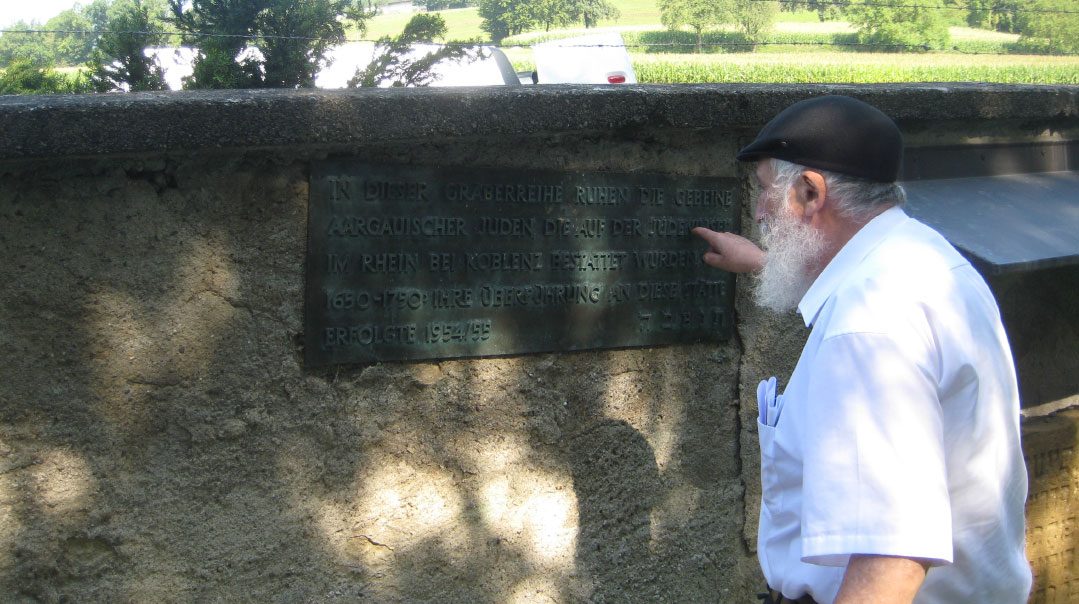
I meet my guide on West Strasse, in the heart of Weidikon, Zurich’s most heimishe neighborhood on a quiet, sunny morning in August. The tightly-knit frum community in Switzerland is both well-established and vibrant today, but Mr. Ushi Bollag, whose family have lived in Switzerland for at least ten generations, will be taking us on a trip back to a less happy and prosperous time: Just two hundred years ago, Swiss Jews were allowed to live in two villages only. An hour’s drive from Zurich, we get to see, touch, and hear the fascinating story of Endingen and Lengnau.
Early Days of Death
Jewish history in Switzerland actually goes much further back than the last few hundred years, Mr. Bollag explains. During the first half of the 14th century, the community in Zurich was led by a certain Rav Moshe ben Menachem, who was a talmid of Rabbeinu Peretz from Corbeil, one of the last baalei Tosafos. Rav Moshe authored Hagahos on the SeMaK (Sefer Mitzvos Hakatan, also sometimes known as the Amudei Golah) known as SeMak MiZurich.
The house of Rav Moshe’s mother, Frau Minna, is still visible in Zurich’s old city. A very wealthy woman, she lent money to the noblemen of the surrounding region of northern Switzerland. As our car drives through the outskirts of Zurich, alongside the River Limmat, Mr. Bollag describes to us the inscriptions in her house: “On the walls of the main reception room, archaeologists found Hebrew inscriptions and the coat of arms of surrounding nobles. They consulted a Jewish historian, Dr. Erich Hausman, and he discovered, written out in alef-beis, the names of various noblemen written in Hebrew next to each one’s coat of arms.”
But the Jewish communities that existed all over Switzerland came to a cruel and tragic end. In 1348–1349, the Bubonic Plague — the Black Death — swept across Europe. The death rate among Jews was very low, due to their scrupulous laws governing hygiene, and this provided enough “proof” for the gentiles to claim that the Jews were spreading the disease. Rav Moshe and his yeshivah students were rounded up in the town square and burned publically al kiddush Hashem on 3 Adar Beis 5109, February 23, 1349. Similar blood libels took place in other Swiss cities such as Bern, Basel, and Schaffenhausen. Jews were either killed or expelled and did not return for some centuries. A plaque in the old city of Zurich details where the Jews of the time were killed. Mr. Bollag tells us about his intervention to have the wording of the plaque changed. “They wrote ‘this is where the Jews died.’ I wrote to City Hall: They didn’t die — they were murdered. And they rephrased the plaque.”
But the old Judengasse of Zurich will have to wait for another day. Today we’re on the way to see and hear the stories of the Jews who settled in Switzerland from the 17th Century and on.
A New Start
It was a forward-thinking landowner, the Graf of Baden, who allowed Jews back onto his lands in the early 1600s. His plan was that the Jews would help develop the local economy. The Jews, many of whom came from Alsace-Lorraine (then disputed territories on the French/German border) were permitted to settle in two villages, Lengau and Endingen. They were guaranteed safe haven, and in return, had to pay various taxes to the Graf, including “shutzgeld”— protection money. “There is some disagreement as to where the Bollags, my ancestors, came from,” he says. “Either from Poland, in which case the name is a corruption of ‘Pollak,’ or from Elzas [Alsace].”
Mr. Bollag explains that it was not the Graf but his successors who later enforced harsh discriminatory laws against the Jews, including a curfew that required them to be back in the two village every night and never stay elsewhere, making business travel almost impossible. Most professions and businesses were closed to them, forcing them to become money lenders or sell animals. If they lived in the same apartment house as non-Jews, separate entrances were built for the Jews. They were not allowed to bury their dead in Switzerland.
These laws were in force until approximately 1874, when international pressure initiated by Jews in France and the United States persuaded Switzerland to stop oppressing its Jews. It is surprising to learn that Switzerland was one of the last Western European countries to grant full freedom and equal rights to Jews. The only ones later were Spain and Portugal.
When these restrictions were lifted, a large percentage of the Jews moved to a village called Baden. We drive past Baden, crossing a stone bridge over the river and see the houses of the village below. Until the 20th century, Baden retained a significant kehillah and a good cheder, which meant that even those families who had moved to Zurich sent their boys to learn in cheder there every day. The Bollag family too moved from Endingen to Baden.
“My father grew up in Baden, and only moved to Zurich on his marriage in 1928,” Mr. Bollag explains. “The Jewish men would daven in Baden early in the morning, and then take the 8:25 train to Zurich, where they were employed in banks and businesses. This gave rise to the local term for a Jew — an “acht funf und tzvantziger” — an “8:25-er.” My grandfather, Yisroel Bollag, learned with the rabbi of the Baden community each morning from 4 a.m. and from 3 a.m. during Selichos. Although he was not chassidish, he traveled to the chassidish centers of Belz and Munkatch, and to the Atzei Chaim of Sighet, and made sure to send his sons to learn in Rav Dushinsky’s yeshivah.”
Echoes of a Silent Shul
The roads get quieter, and soon we are in the village. After obtaining the key from the (once fully Jewish) Margoa nursing home, we drive around the corner to Lengnau’s beautiful old shul, which dominates a central street in the village. A sign outside announces free entry, inviting tourists to visit on afternoons during the summer season. Mr. Bollag holds up the huge key. “They used to say in Europe that Jews have noses as big as the schlussel [keys] of their synagogues,” he jokes.
The door swings open, and we step over the wooden threshold from the sunny Swiss village into another world: an ornate, perfectly preserved shul. I am taken by surprise by the hushed, rarefied air of the sanctuary, so beautiful and so old, now silent from the echoes of sung and whispered prayers. We walk forward down the aisle on the stone floor. Everything still stands in place: an impressive aron kodesh painted blue and gold, a pulpit in marble, an ample bimah in the center. Sconces filled with tall white candles to provide light hang all over the shul.
Above the aron, the morning sun streams in through a circular stained-glass window. The ceiling rises above us, decorative, ornate. At each junction of its panels, a pasuk is stenciled. Running along two sides and the back of the shul is the ladies’ gallery, with arched partitions. The shul has been recently repainted and is in beautiful condition; all that’s missing is the congregation. It’s an emptiness that tugs at the heart.
Standing at the pulpit, Mr. Bollag raises his voice in a make-believe derashah. “Morai v’rabbossai…” Then he moves to the amud and intones “Vehu rachum…” The shul, of course, remains silent. It no longer has a minyan, even on Shabbos, even on the Yamim Noraim. We sit down in one of the wooden pews, and find that we can’t read the siddur when it is placed on the platform in front of us. “They left enough space between the rows for everyone to take three steps back for Shemoneh Esreh,” Mr. Bollag explains. While not especially learned the Yidden of Lengnau lived with halachah, even if it meant having to hold their siddurim while seated.
After murmuring a few pesukim in prayer, we slowly turn to leave. A portrait of the shul’s most famous leader, Rav Rephael Ris, stands in the anteroom at the back. Sketches show some of its history. This is not the first shul that stood in Lengnau, but a larger one that was built to replace the original, finished in 1847. There are lists of members’ names, recognizably Swiss and recognizably Jewish — Bollag, Gugenheim, Dreifuss, Bloch.
One thing missing from this building: restrooms. “There were none,” our guide clarifies. “They just didn’t build them indoors at that time. Imagine it — all those Yidden standing here for hours on Rosh Hashanah and Yom Kippur….”
We leave slowly, closing the door and locking it, leaving the shul to its silence.
Buried Treasures
Back in the car, we pass through the modern village of Lengnau. A general store, a hair salon, well-kept homes. Parking opposite a field of corn stalks waving in the wind, we arrive at the cemetery located and shared between the two communities of Lengnau and Endingen. It’s just a cemetery, the universal sign of Jewish life, yet in this historical context it’s a special blessing.
From 1603 to 1750, discriminatory laws in Switzerland forbade Jews from burying their dead anywhere in the Swiss earth. Deprived of this basic right, the Jews were forced to bury beyond the last Swiss border village of Koblentz. Funerals found their way to the “Juden Insel,” a small island on the Rhein, in no-man’s-land between Switzerland and Germany.
In 1750, the restriction was lifted and this beis olam was inaugurated. We enter on the Lengnau side and walk alongside the mossy gravestones with faded Hebrew inscriptions. There are two Jewish families who still live in Endingen today, and they ensure the cemetery is well kept.
Mr. Bollag leads us to the kevarim of the rabbanim. Rav Raphael Ris was the rabbi of both communities from 1786 until his passing in 1812, and his son Rav Avraham was his successor until his death in 1834. They lived, davened, and were buried in the Lengnau section. Clearly visible are the first words on Rav Avraham’s headstone, “Ish Mofes” — a man of wonders. “You have to realize that this epitaph was written by Yekkishe Jews,” Mr. Bollag emphasizes. “They didn’t use that term lightly. He was a great tzaddik.” It was a descendant of Rav Ris, Rav Nosson Gestetner of Bnei Brak ztz”l, who instigated the recent upsurge of interest in his ancestor’s kever. Around a decade ago, he began to send petitioners to daven here, and their stories of salvation were the catalyst for many more groups who visit, especially on Erev Rosh Chodesh and yahrtzeits.
We take the opportunity to daven at the kivrei tzaddikim and light the candles provided by Mrs. Bollag.
Then we move on toward the Endingen section. “Now I feel at home,” Mr. Bollag says comfortably. His ancestors lived in Endingen for ten generations.
The end wall of the beis olam tells a tragic story. “In 1951, it became clear that the island on the Rhein was sinking and the graves there were endangered. The Swiss Jewish Federation took care of moving the graves to this beis olam, but tragically, they were so sunken that it was not possible to rebury the Jews individually. The remains were reburied right along here, and the few matzeivahs that could be salvaged are alongside this wall. This lady,” Mr. Bollag points out one matzeivah, “was an ancestor of mine, a great woman.”
The Bells Still Chime
Unlike the Lengnau shul, the Endingen one is tucked away in a side courtyard. There are several informative posters outside about the village’s Jewish history, and a sign informs us that we are on the “Judische Kulturweg.” Endingen first had a shul in 1764, and this impressive structure was completed in around 1850, when the community was at its peak — approximately 1,000 Jews. “There were more Jews than gentiles here at some points,” Mr. Bollag explains. “The shul was therefore the highest building — and the only house of prayer — in Endingen. Law required the highest building in the village to have bells, to be rung in case of fire.” The two glocken [bells] at the top of the façade still chime every hour, right under the Luchos that crown it.
The shul is impressive, with walls painted a dusty pink, regal arches, and a beautiful painting rising up above the aron kodesh. There is a marble lectern next to the aron, but unlike in Lengnau, no seat for a rabbi, as they didn’t have their own. The paroches is intricate, embroidered by the women “with all their hearts,” for the shul’s dedication in 5611 (1850). Yet, the aron kodesh stands empty. Mrs. Bollag davens Shacharis in the shul.
At the back of the shul, a variety of books are laid out for sale. There are volumes on the history of Jews in Switzerland and in this area particularly, written in German. A typewritten sign informs us that on the following Rosh Chodesh, Shacharis services will be held in this beautiful shul, led by Chazan Shay Zorger of Zurich, and followed by brunch in the Margoa nursing home. The two families who reside in Endingen take pride in inviting guests to the occasional Sunday Rosh Chodesh choral events. The shul, though, is also used for secular cultural events. “At least the sifrei Torah are not here to witness the secular concerts…” Mr. Bollag says. The occasional Swiss couple holds their chuppah in the ornate old shul.
It’s 12 p.m. when we leave the shul, and the bells chime the hour from above us.
According to the signage, the village once boasted a Jewish school too, but it is no longer standing. Mr. Bollag has seen the old mikveh, but as it is on private property, it’s not easy to access. He greets a passing mailman with a warm “Grüezi Wohl,” (“Hello” in Swiss-German) and inquires how many people reside in Endingen today. “Around 2,000,” the mailman responds.
As Many Brissim as Mitzvos
At the front of the Endingen shul a small sofa upholstered in red velvet catches my eye. This was used for bris milah. One of the documents Mr. Bollag shows us is a photocopy of the moving diary of Mosche Dreifuss, the community’s mohel, born in 1799.
On 13 Tishrei 5586 (1825), Mosche records performing his first bris, on a child named Nosson, working together with his uncle, also a mohel. He prays to perform as many brissim as the gematria of his name — 345.
“You have to be aware that this was not in Bnei Brak,” our guide reminds us. “This was out here in the Swiss villages. But you can see that it was a vibrant community. Mosche Dreifuss achieved his goal.”
We look through the meticulous handwritten records, and Mr. Bollag points out his own ancestor, Michoel ben Lipa, the infant at bris number 93. The entries continue, slowly becoming more frequent, until 8th Av 5622 — 36 years later — when Mosche devotes a page to lyrically thanking Hashem for enabling him to do the mitzvah of milah 345 times. Then he asks for Heavenly help to continue and accomplish more, so that he can reach the gematria of his father’s name, Zalman, too.
In 5632 (1872), he exultantly records reaching number 613, at a bris in Baden on the first day of Shavuos, “the day on which the 613 mitzvos were given to us.”
Generations Lost
Mr. Bollag is somewhat of a community elder in Zurich, and unofficially, he is responsible for showing these historic beginnings to a new generation. For years, he has been taking the chareidi school children on trips to Lengnau and Endingen. “In each class, I prepare a list of the boys who are descended from my Bollag ancestors or other families from these communities. And I read them out as we sit in the shul.” The frum descendants, though, are in the minority. Swiss Jews have an assimilation rate similar to those in other Western countries.
For example, one of Mr. Bollag’s many distant cousins is Ruth Dreifuss, a feminist and politician who served as the first female president of the Swiss Confederation. “She sent me greetings for my 70th birthday, acknowledging me as a relation, but although her ancestors davened in this very Orthodox shul, she has nothing to do with Yiddishkeit.”
Mr. Bollag has his eye on the wider community too. In 1994, after several incidents of anti-Semitism in Zurich, a Swiss television channel invited him to take part in a panel discussion about anti-Semitism. “They wanted someone who looked obviously Orthodox,” he explains. After consulting with Rav Moshe Soloveitchik ztz”l, he agreed to take part. “Because if I didn’t, who knows who would have represented us?”
This led to an invitation onto the seven-member board of SIG — the Swiss Federation of Jewish Communities, or as locally known, Schweizerischer Israelitischer Gemeindebund. Mr. Bollag and Professor Donat, a professor of medicine from Geneva, were the only Shabbos-observant members. SIG represents Swiss Jewry to the government and to academic and employment tribunals. Mr. Bollag arrived on the board in 1996, an Orthodox representative ready to serve his community with energy and ambition.
“The rate of intermarriage here, especially in the smaller communities, is around 60 percent. My idea was to use the tremendous assets of SIG to create youth groups and educational programming to stem the tide. SIG are the beneficiaries of many bequests and own valuable real estate. They own land in Davos, originally purchased for burial, which would have enough space for another 5,000 years at the current rate. It could be repurposed, and a youth hostel built, offering the out-of-town kids ski-weekends together with spirited shabbatons of Jewish programming. Unfortunately, Jewish education did not interest my fellow board members, who preferred to hoard their holdings.” Disappointed, Mr. Bollag stepped down in 2000. He recommended Dr. Rolf Hallonbrenner, another member of Zurich’s frum community to take his place.
Chocolate Talk
As well as his community activism, Mr. Bollag is known for his kosher Swiss chocolate production. The famous kosher line of Camille Bloch Torino chocolates is his. On the way home, we munch on some black pareve Torino chocolate sticks and talk chocolate. Camille Bloch is a Jewish-owned but nonkosher company; owner Rolf Bloch, in fact, sat on the SIG board together with Mr. Bollag. But the strictly kosher line under the hechsher of Dayan Westheim is marketed around the world, helping to make the brand international. The Bollags also manufacture kosher cheeses and yogurts that are sold in Europe.
We reenter Zurich at noon, and as we get out of the car, next to a Hatzalah motorcycle, Mr. Bollag stops a young chassidish man riding his bike. “This is a grandson of the rav of Baden,” he says, introducing the young man. The shuls may be silent, but the grandchildren still pray. They have just moved on — and isn’t that the perennial tale of Jews in exile?
(Originally featured in Mishpacha, Issue 784)
Oops! We could not locate your form.
